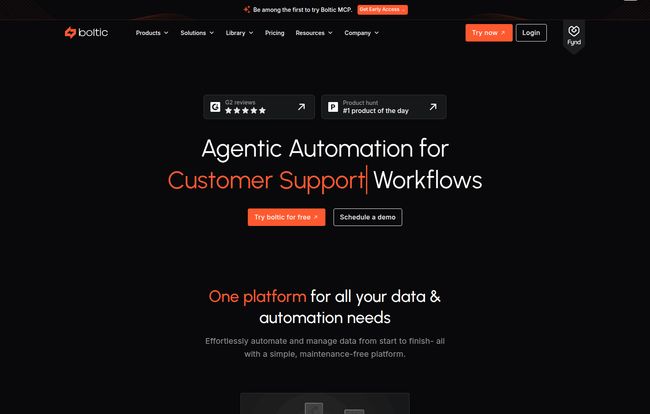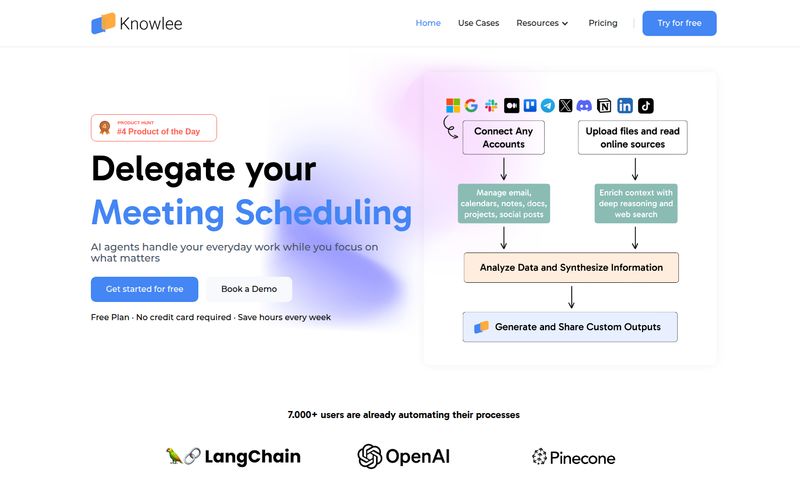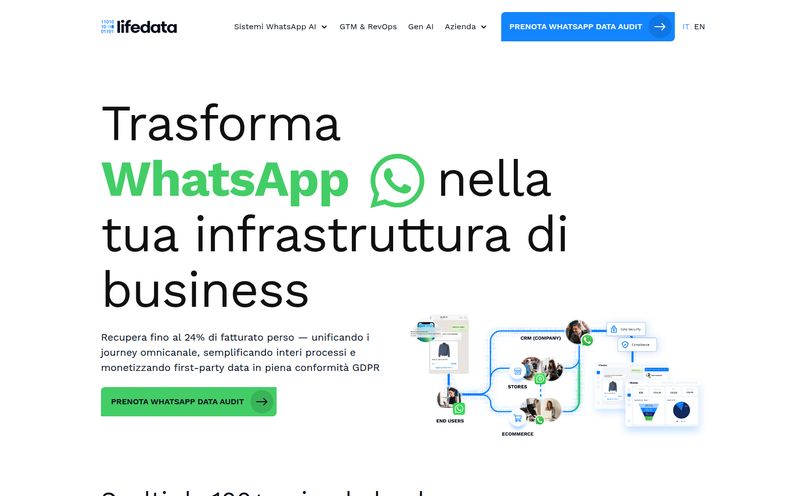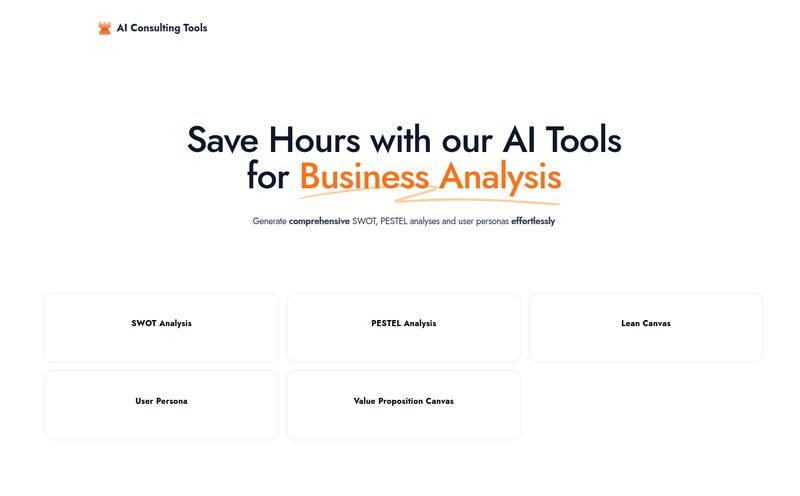How much of your week is spent doing work that a clever robot could, and probably should, be doing? I’m talking about the mind-numbing grind of exporting a CSV from one platform, cleaning it up in Sheets, and then uploading it to another. Or manually updating Slack every time a new task pops up in Jira. It's the digital equivalent of carrying water in a leaky bucket. We all do it, we all complain about it, and we all secretly wish there was a better way.
I’ve been in the SEO and digital marketing game for years, and I’ve seen my fair share of so-called “automation” platforms. Some are great for simple A-to-B tasks. Others promise the world but end up being more complicated than the manual work they’re supposed to replace. So, when I stumbled upon a platform called Boltic, I was skeptical but intrigued. It calls itself an “Enterprise-Grade Modern Big DataOps Platform.” That’s a mouthful, I know. But stick with me, because what I found was genuinely interesting.
So, What Exactly is This Boltic Thing?
Okay, let's cut through the jargon. At its heart, Boltic is a platform designed to automate the flow of data and tasks between all the different tools your business uses. Think of it as a super-smart central nervous system for your company's operations. It connects your apps, moves data around intelligently, and triggers actions based on rules you set. But the secret sauce, the thing that made me raise an eyebrow in a good way, is its focus on AI-powered workflows.
It's not just about simple “if this, then that” recipes. Boltic aims to handle more complex, multi-step processes that traditionally required a developer or a data scientist. It’s built for businesses of all sizes—from scrappy startups to big enterprises—that are drowning in data and looking for a life raft. The whole idea is to simplify your work life, and honestly, who doesn't want that?

Visit Boltic
Who Should Give Boltic a Spin?
While the platform seems pretty versatile, it’s not for everyone. If your only automation need is to post your Instagram photos to Twitter, this is probably overkill. But if you’re in a role or industry where data is constantly moving between systems, you should pay attention.
Based on their site, they have a strong focus on a few key areas:
- Retail & Ecommerce: Imagine automatically syncing inventory levels across platforms, streamlining order fulfillment, or personalizing customer outreach based on purchase history.
- Financial Services: Think about automating compliance checks, streamlining client onboarding, or consolidating reports from multiple financial systems without manual intervention.
- B2B & SaaS: This is where I really see the magic. You can do things like migrate data between CRMs (like from Freshsales to HubSpot), sync sales and support data, or create complex lead nurturing sequences that would be a nightmare to manage by hand.
Basically, if you’re an ops manager, a data analyst, a marketer, or a business owner who feels like you're one spreadsheet away from a complete meltdown, Boltic is probably speaking your language.
The Features That Make Boltic Stand Out
I've messed around with a lot of tools, and usually, the feature list is just a wall of text. But Boltic’s capabilities are woven together in a way that makes sense. Here’s what stood out to me.
It's Not Just Automation, It's Agentic Automation
This is the term they use, and it’s pretty fitting. The “AI Agent” or “Copilot” feature is designed to be more than a simple bot. It can understand more complex requests and execute entire workflows. For example, instead of just saying “When new email in Gmail, create a Trello card,” you could potentially set up a system that reads an incoming lead email, finds the company's platform from the signature, enriches that data with a third-party service, and then creates a detailed, prioritized lead record in your CRM. That’s a whole different level of automation.
A Look at the Nuts and Bolts: Pipes, Streams, and Serverless
Okay, these terms might sound a bit technical, but they're easier to understand than you think. I like to think of it like building a data plumbing system for your business.
- Workflows: This is your master blueprint. It’s where you design the overall process from start to finish.
- Pipes: These are the data pipelines that move your information from Point A to Point B. It’s the scheduled, batch-based work, like a nightly sync of your customer database.
- Streams: This is the cool, real-time stuff. It’s a constant flow of data. For example, getting instant Slack notifications for new high-value sign-ups the second they happen.
- Serverless: This is a huge plus for me. It basically means you don’t have to worry about the underlying servers, maintenance, or scaling. Boltic handles all the heavy lifting in the background, so you can focus on building your automations, not managing infrastructure. It just works.
Making All Your Apps Play Nice Together
A workflow tool is only as good as its integrations. Boltic seems to get this. They don't just have a long list of logos; they focus on intelligent integrations. It’s about ensuring the data that flows between apps like HubSpot, Google Sheets, Mailchimp, and Slack is clean, correct, and actually useful. This prevents the classic “garbage in, garbage out” problem that plagues so many automation setups.
The All-Important Question: How Much Does Boltic Cost?
Alright, let's talk about the price tag. I appreciate when companies are transparent with their pricing, and Boltic lays it out pretty clearly. It looks like they've structured their plans to grow with you, which is smart. The pricing page on their website offers a good breakdown.
Here’s a quick summary of their plans as of my last check:
| Plan | Price | Who It's For | Key Highlights |
|---|---|---|---|
| Free | $0 for 90 days | Individuals or small teams just dipping their toes in. | 1 User, Basic Workflows, 250 Executions/mo. A very generous trial. |
| Basic | $69 / month | Small businesses ready to get serious about automation. | 2 Users, 3,000 Executions, Email & Chat Support, 1M Rows Processed. |
| Professional | $199 / month | Growing teams and companies with more complex needs. | 5 Users, 10,000 Executions, AI Copilot, Real-time Scheduling. |
| Enterprise | Talk to Sales | Large organizations needing scale, security, and custom solutions. | Custom everything. Unlimited users, premium support, white-label options. |
The 90-day free trial is a huge standout. That’s more than enough time to actually build something meaningful and see if it delivers a return. The jump to $69 for the Basic plan feels reasonable for a team that's saving several hours of manual work each week.
My Unfiltered Opinion on Boltic
No tool is perfect, right? Here’s my honest take. The big advantage is its power. This isn't just another Zapier clone. The focus on AI, big data, and complex workflows puts it in a more serious category. It feels like a platform built to solve real, thorny operational problems, not just connect two apps. The serverless architecture is a massive technical win that translates to a huge practical benefit: less hassle for you.
On the flip side, with power comes a bit of a learning curve. While they aim to simplify things, concepts like “Pipes” and “Streams” might be new to marketers who are used to simpler tools. It's not a negative, just something to be aware of. You'll need to invest a little time to wrap your head around its full potential. Also, the classic “Talk to Sales” for Enterprise pricing is standard practice but always feels a bit like a barrier. I get why they do it, but I always prefer seeing a number, even if it's a big one.
Frequently Asked Questions About Boltic
- Is Boltic easy for non-developers to use?
- From what I've seen, they've put a lot of effort into the user interface. While some concepts might be new, you don't need to be a coder to build workflows. However, having a logical, process-oriented mindset will definitely help you get the most out of it.
- How is Boltic different from tools like Zapier or Make?
- I'd say it's about depth and scale. Zapier and Make are fantastic for connecting apps and creating linear automations. Boltic is designed to be more of a DataOps platform, capable of handling larger data volumes, real-time streams, and more complex, AI-driven logic that involves transforming and enriching data as it moves.
- What kind of support can I expect from Boltic?
- Support scales with the plan. The Free trial is email only. The Basic plan adds chat support, and the Professional plan gets you priority security support. Enterprise customers get a dedicated support channel. This seems like a fair model.
- Can Boltic handle large amounts of data?
- Yes, that seems to be one of its core strengths. The platform is built for “Big DataOps.” The plans have generous limits on rows processed (starting at 1 million on the Basic plan), and the Enterprise plan is built for massive scale. This is a key differentiator from many other consumer-grade automation tools.
Is Boltic the Future of Your Workflow?
Look, the world is only getting more complex, and the amount of data we have to manage isn't going down. Tools that can intelligently manage that complexity for us are no longer a luxury; they're a necessity. Boltic feels like a strong contender in this space. It’s ambitious, powerful and seems to understand the real-world problems that businesses face.
If you're still shuffling spreadsheets and your current automation tools are hitting their limits, that 90-day free trial is looking mighty tempting. It might just be the thing that finally lets you put down that leaky bucket and build a proper aqueduct for your data. And that sounds like a much better way to spend your time.



